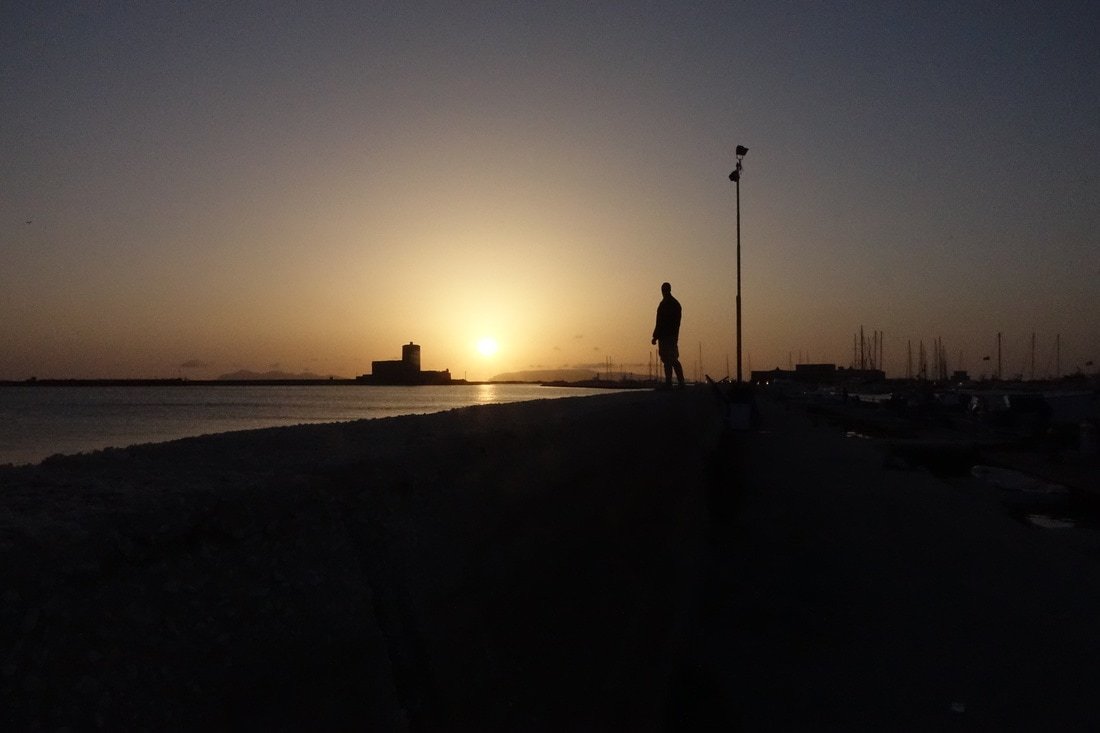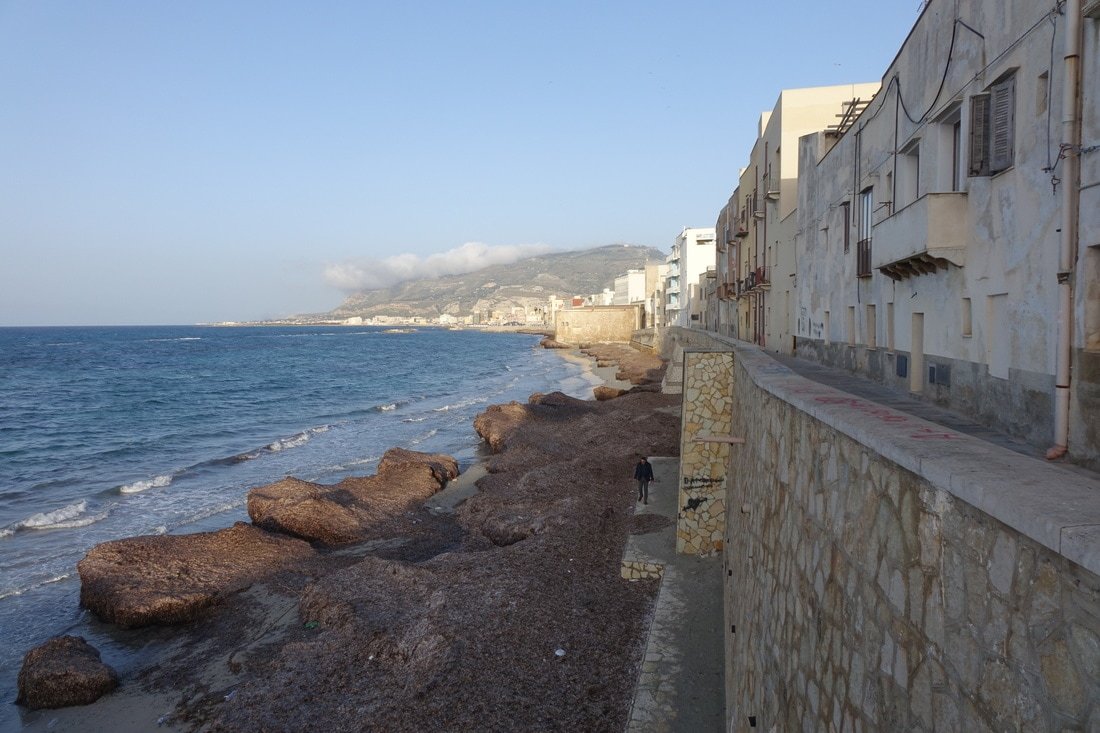5 Things to Check Out on Your Trip to Trapani, Italy
The marina seawall is an ideal spot to catch the sunset on Trapani.
Located on a curve of coastline in Western Sicily, Trapani is a rare jewel to be able to step ashore during a Mediterranean cruise. Legend tells that the goddess of harvests, Demeter, dropped her scythe in a fit of desperation while searching for her lost daughter. The tool fell to earth and landed by the sea forming the sickle-shaped template on which the village of Trapani
grew.
Delightfully walkable, the town embraces a slower pace of life and possesses the charming feel that it owes mostly to its roots as a fishing village.
Colleen and I discovered Trapani when we arrived on Viking Sky, one of only a dozen or so ships that visit the port each year. Fishing and canning are the main industries, as the village like so many others in the region rely on the fruits of the sea.
The port area is located right at the edge of town and a marina on a piece of land that juts into the Tyrrhenian Sea and points like the tip of an arrow aimed directly at the Aegadian Islands. Walking straight through the city, you will spot small town squares and historic baroque buildings. The long promenade at the side of town opposite from your cruise ship is ideal for an evening stroll at sunset. Waves crash along a thin strip of sand below the high seawall. Quaint residences painted goldenrod with blue doors loom over the promenade and display laundry hung out to dry.
A flat province, Trapani is bordered by the Tyrrhenian to the north, the Mediterranean Sea and saltpans at the south, the Aegadian Islands and Strait of Sicily to the west and Mount Erice to the east. The town is home to 70,000, and we enjoyed a dinner ashore at a family-owned restaurant tucked in a alleyway. Many fine seafood restaurants are located within easy walking distance of the port.
Big Highlights in Tiny Trapani
1. Erice Is and Essential
The nearby medieval commune sits atop Mount Erice (2,460 feet above sea level) and is reachable by cable car (closed mid-January to mid-March). You can explore ancient ruins of walls from different periods of rule (Phoenician and Elymian) as well as two castles.
2. The Stunning Seascape
Near the cruise pier, the marina is filled with small fishing boats that you can see plying the waters offshore in the midst of the Aegadian Islands. This is a nice place to take a walk, especially around sunset.
3. Wines, Salts and Olives
Trapani is known for its production of Italian sea salt, fine olives and olive oils and wines (Marsala). Make sure to get a taste and grab some goodies to take back home, too.
4. A Number of Beautiful Churches
The Sanctuary of the Annunciation, a 14th century monastery, and church of San Lorenzo, a triple-aisled basilica with frescoes and Neoclassical features, are worth visits. These are just two of several interesting churches or cathedrals you will spot while wandering the cities easy-to-navigate piazzas.
5. Saltworks and Windmills
The village salt industry started in the 15th century, and this heritage is on full display at the picture-perfect saltworks at the front of Trapani's town gates. White mounds of salt and the windmills make a nice shot as the sun goes down.
Thanks for reading.
Ciao, for now,
JR



